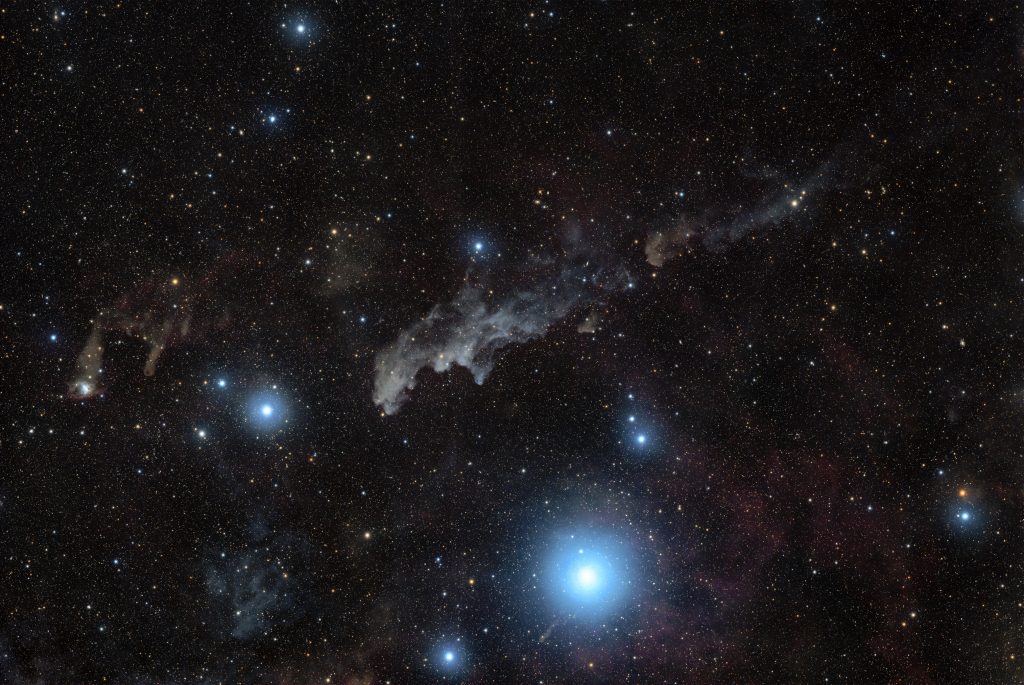Last four winters we spent our skiing vacation in the same place – Flims-Laax ski resort. Specifically, in Berghaus Nagens. This small ski hotel is at the end of the gondola at 2200 meters above sea level. This means the nearest street lamps are far away. However, the hotel is surrounded by ski slopes. The slopes need to be prepared by snow groomers, which illuminate the white snow. This spoils a bit otherwise very dark sky. However, the main reason was to enjoy the skiing vacation and the starry nights are just an add-on. Last year I struggled with the battery, which froze after a few minutes outside. I purchased a dedicated astro-battery this year and was fortunate with the weather. 4 cloudless nights in one week – I really didn’t expect that to happen.
The initial plan was to capture the Witch Head Nebula, then some dark nebulae in Taurus, and if time allows Pleiades. It went well, so I am slowly preparing a plan for next year.

| Lens | Sony 20 mm f1.8 G @f2.2 |
| Camera | Sony A7III AstroMod |
| Mount | Tripod |
| Exposure | 8x15s, ISO 3200 |
| Date | 2024-01-10 |


